Key takeaways:
- Ocean conservation is vital for protecting ecosystems essential to planet health and human survival, with individual actions, like reducing plastic use, playing a significant role.
- Coral reefs, referred to as the “rainforests of the sea,” support 25% of marine species and are crucial for coastal protection and local economies reliant on tourism and fishing.
- Underwater photography techniques, including managing light, white balance, and composition, can enhance the portrayal of coral reefs while promoting awareness of their fragility.
- Collaborative conservation efforts between scientists and local communities, along with coral restoration projects, are essential for preserving marine biodiversity and inspiring collective action.
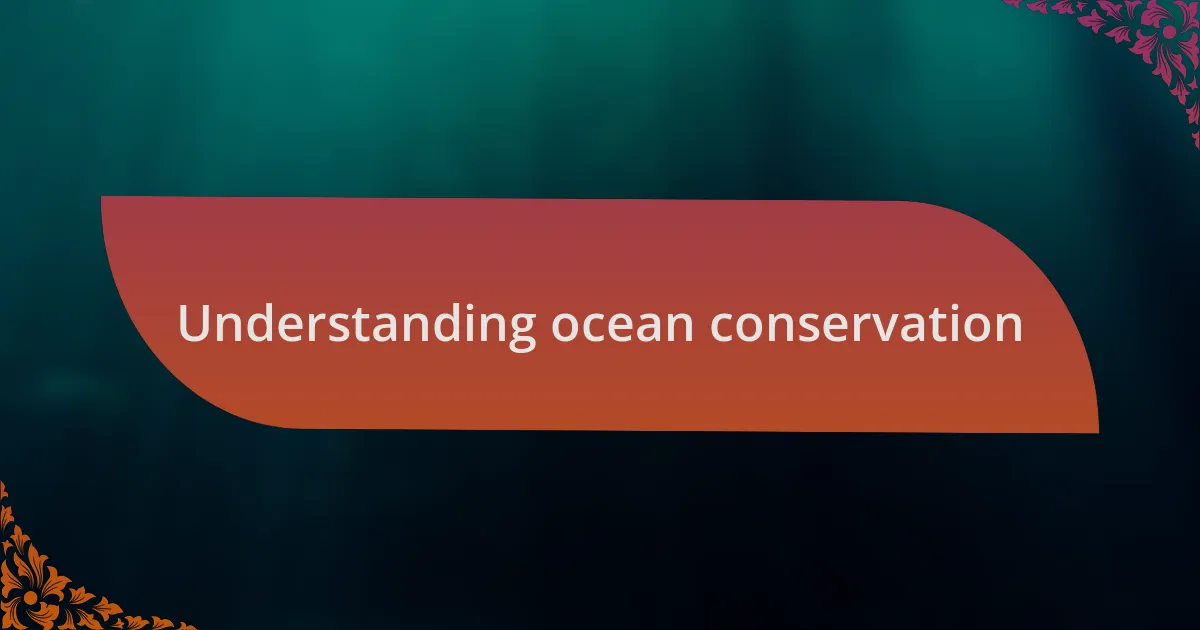
Understanding ocean conservation
Ocean conservation is pivotal because it safeguards invaluable ecosystems that go beyond just beauty; they are critical to our planet’s health and our very survival. I remember my first dive among coral reefs; the vibrant colors and bustling life took my breath away. It struck me just how fragile this beauty is and how our actions can threaten this underwater paradise.
Every inch of the ocean serves a purpose, from the microscopic phytoplankton producing oxygen to the coral providing habitat for countless marine species. Have you ever considered how much our everyday choices ripple out to affect these ecosystems? I’ve seen firsthand how something as simple as reducing plastic use can have a significant impact on keeping marine habitats clean and thriving.
Understanding ocean conservation means recognizing our interconnectedness with marine life. During a conservation trip, I encountered volunteers who dedicated weeks of their lives to restore damaged reefs. This dedication and hope not only inspired me, but it also made me realize that each of us can play a role, no matter how small, in protecting these vital resources for future generations.
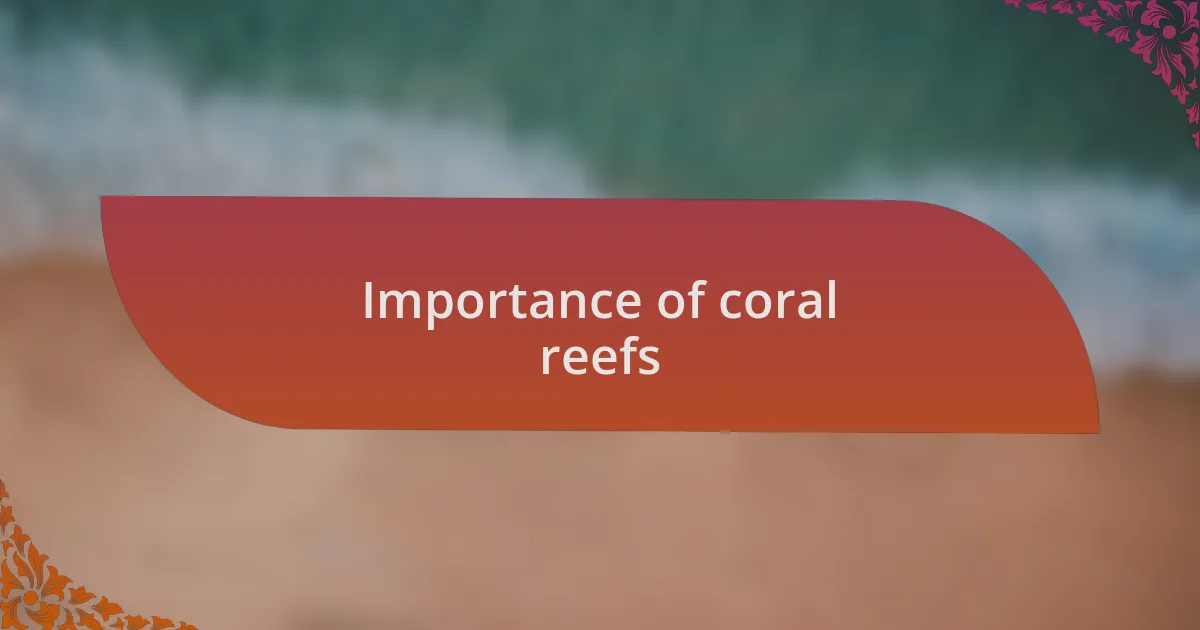
Importance of coral reefs
Coral reefs are often referred to as the “rainforests of the sea” for a reason. They provide essential habitats for approximately 25% of all marine species. I recall the excitement I felt while snorkeling near a coral reef and watching fish darting in and out of the vibrant corals. It made me realize how crucial these ecosystems are for the biodiversity of our oceans.
These reefs not only offer a home for countless marine organisms but also play a vital role in protecting coastlines from erosion and damage caused by storms. During one of my beach clean-up days, I saw firsthand how healthy reefs help maintain tranquil shorelines, serving as natural barriers against powerful waves. It makes you wonder, wouldn’t preserving these underwater citizens be worth every effort?
Furthermore, coral reefs are critical to local economies, particularly in areas reliant on tourism and fishing. On a trip to a small tropical island, I learned that communities thrive on the livelihood provided by healthy reefs through snorkeling and fishing. It hit me then: safeguarding coral reefs equates to preserving not just marine life but also the harmony of local cultures and economies, a reminder that our choices have far-reaching consequences.
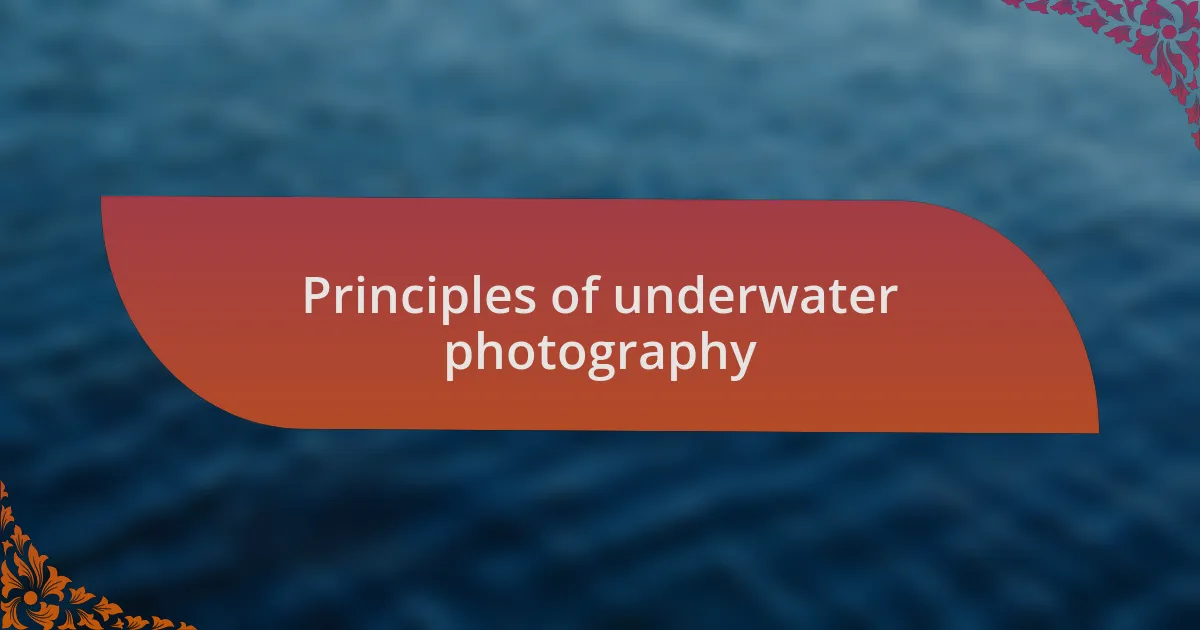
Principles of underwater photography
When photographing underwater, lighting becomes your best ally. I remember diving in shallow waters, where beams of sunlight danced through the surface, illuminating the vibrant corals below. It’s essential to understand how light conditions can change with depth; capturing this magic requires you to adjust your settings and angles accordingly. Have you ever noticed how certain corals almost seem to glow under specific light? That’s the beauty of nature waiting to be captured.
White balance is another crucial element to consider. I learned this the hard way during my first underwater shoot when everything turned out overly blue or green. Adjusting your camera settings to set the correct white balance can transform your photos from bland to stunning. I often aim to find that perfect balance where the colors of the reef pop, making them as true to life as possible.
Additionally, composition plays a significant role in how your underwater images resonate with viewers. Framing your shot and considering the rule of thirds can dramatically change the story your photo tells. I’ve found that taking an extra moment to think about how to position the reef and any marine life around it often leads to more striking images. Isn’t it fascinating how a slight shift can lead to such different perspectives? Each click of the shutter holds the potential to convey the mesmerizing beauty and fragility of these underwater ecosystems.
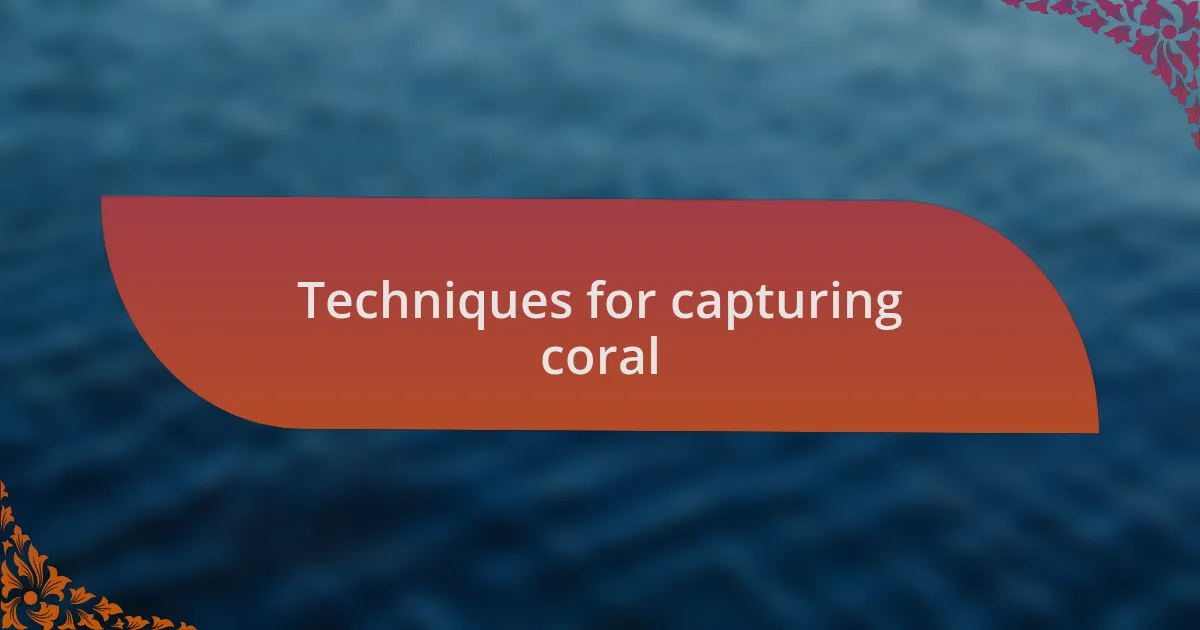
Techniques for capturing coral
Capturing coral reefs requires a keen eye and an appreciation for their intricate details. One technique I swear by is getting close to your subject. During a dive in the Caribbean, I found that the more I submerged myself into the vibrant clusters of coral, the more I noticed the tiny, elegant creatures that call them home. That intimacy not only enhanced the images but also deepened my connection to the marine ecosystem. Have you ever truly taken the time to observe how each coral can tell a story of resilience and beauty?
Another critical technique is managing your buoyancy. Learning to hover effortlessly above the reef helps avoid any accidental contact, which could damage delicate corals. I remember one dive where I struggled to maintain my position and inadvertently kicked up sediment, clouding my shot. It was a frustrating moment, but it taught me the importance of control and awareness underwater. Being able to keep still in the water allows for sharp focus and captures those details that otherwise might go unnoticed.
Finally, experimenting with angles can yield surprising results. I often try shooting from below the coral, which allows the sun’s rays to filter through the surface in captivating ways. This technique offers a fresh perspective that can really draw viewers in. Reflecting on my own experiences, I’ve discovered that creativity is key—what angle surprises you can often surprise your audience as well. Isn’t it exhilarating to think about how different viewpoints can breathe new life into underwater photography?

Highlighting coral reef conservation
Coral reef conservation is crucial for maintaining the biodiversity of our oceans. I remember a recent dive where I encountered an area that had been protected from fishing and tourism. The contrast was striking; vibrant colors and a multitude of species flourished there, showcasing the remarkable benefits of conservation efforts. When faced with the devastation of coral bleaching or reef destruction, doesn’t it make you wonder about the collective role we play in preserving these underwater wonders?
One notable aspect of conservation is the collaboration between scientists and local communities. They often work together to monitor reef health and educate others about sustainable practices. On one trip, I met a local fisherman who spoke passionately about how sustainable fishing methods not only protect marine life but also ensure his livelihood for generations to come. Sharing experiences like these can ignite a fire in others to support conservation initiatives. Isn’t it inspiring to think that one person’s commitment can ripple through an entire community?
Finally, the rising tide of coral restoration projects is an exciting development in conservation. I had the chance to volunteer with a team that transplanted coral from nurseries back onto the reef. Witnessing the small yet significant impact we made felt deeply rewarding. Every little effort counts! It prompts me to ask: what small steps can we take in our daily lives to contribute to the health of our oceans?
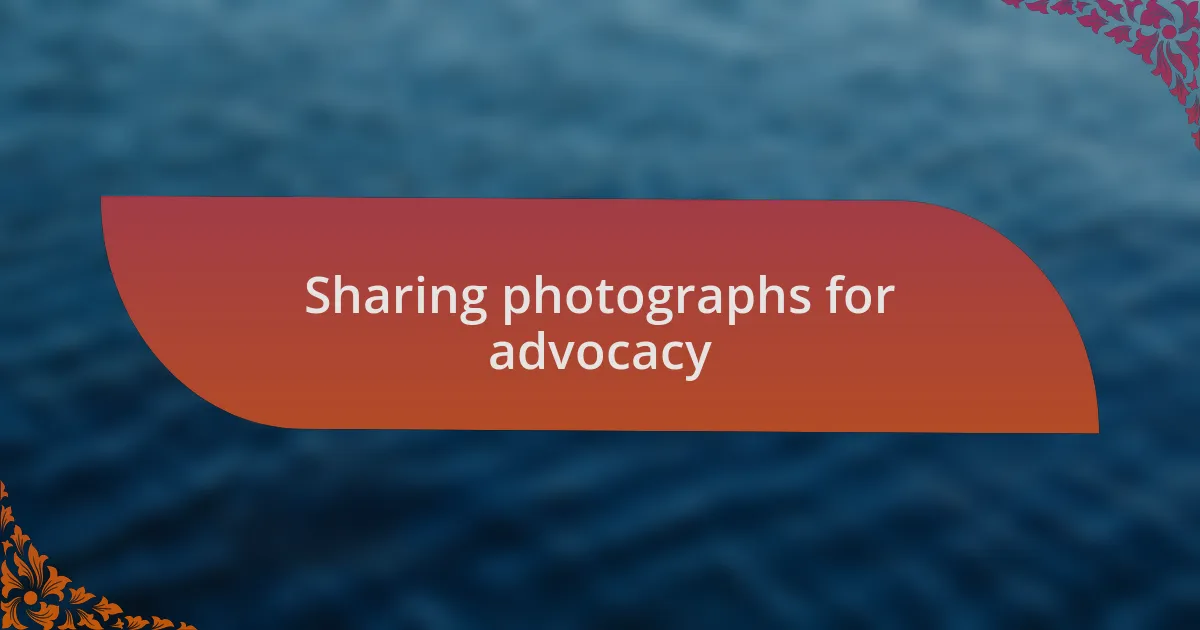
Sharing photographs for advocacy
Sharing photographs of coral reefs goes beyond mere aesthetics; it can be a powerful advocacy tool. I recall a time when I posted a stunning underwater shot of a thriving reef, and the comments poured in. People were moved to see the beauty of these ecosystems, prompting discussions about how we can protect them. Isn’t it fascinating how a single image can inspire action and raise awareness?
Every photograph tells a story, and when we share them, we invite others to be part of that narrative. I once collaborated with a conservation group, showcasing images of bleached corals alongside vibrant, healthy reefs. The stark contrast motivated viewers to pledge support for local conservation efforts. How often do we realize that we hold the ability to ignite change just by sharing what we’ve seen?
In my experience, social media can amplify our voices when it comes to coral reef advocacy. I remember participating in an online campaign where participants shared their reef photographs along with personal reflections. The community that formed around those images created a collective sense of purpose. Isn’t it remarkable to think that through simple acts of sharing, we can cultivate a global movement dedicated to protecting our oceans?